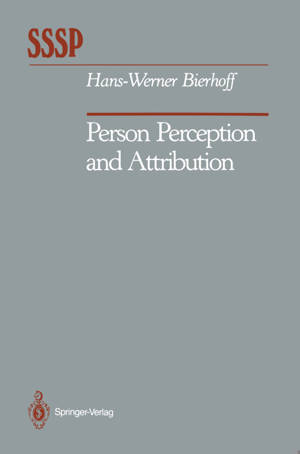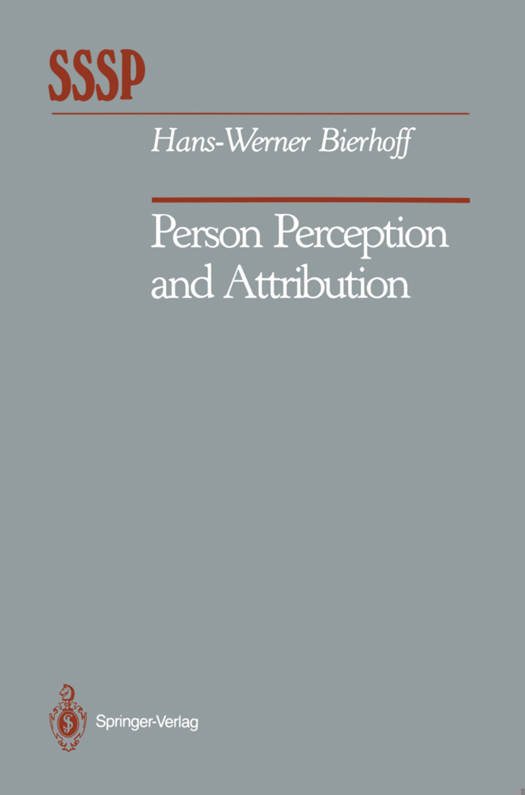
- Afhalen na 1 uur in een winkel met voorraad
- Gratis thuislevering in België vanaf € 30
- Ruim aanbod met 7 miljoen producten
- Afhalen na 1 uur in een winkel met voorraad
- Gratis thuislevering in België vanaf € 30
- Ruim aanbod met 7 miljoen producten
Zoeken
€ 125,95
+ 251 punten
Omschrijving
Person perception is of great importance in everyday life and human science. Judgment of other people's characteristics and intentions is important for suc- cessfully planning actions within a social environment. Questions about the formation of impressions and causal attributions are central to social psychology and the study of diagnostic judgment formation. The field of per- son perception deals with questions of how impression formation proceeds, what characteristics and intentions are attributed to other people, and how preformed schemata and stereotypes influence people's first impressions. Research on person perception developed rapidly after the Second World War. In the 1950s the precision and accuracy of person perception received special interest, but the problems concerning whether an individual's assessment of another personality is exact or not could not be solved. Another approach, which began in the 1940s and was derived from the Gestalt psychological tradi- tion, dealt with impression formation based on selected social cues. This ap- proach, which proved to be very useful, had considerable influence on both the research methods and the theoretical orientation of the research work. On the one hand, by using a combination of individual cues (like physical characteris- tics) researchers tried to ascertain how an impression of a person was formed. On the other hand, the Gestalt psychological orientation led to an interest in the process of person perception, which in the last 10 years has concentrated on questions concerning information reception and processing.
Specificaties
Betrokkenen
- Auteur(s):
- Uitgeverij:
Inhoud
- Aantal bladzijden:
- 313
- Taal:
- Engels
- Reeks:
Eigenschappen
- Productcode (EAN):
- 9783642741326
- Verschijningsdatum:
- 23/12/2011
- Uitvoering:
- Paperback
- Formaat:
- Trade paperback (VS)
- Afmetingen:
- 156 mm x 234 mm
- Gewicht:
- 467 g

Alleen bij Standaard Boekhandel
+ 251 punten op je klantenkaart van Standaard Boekhandel
Beoordelingen
We publiceren alleen reviews die voldoen aan de voorwaarden voor reviews. Bekijk onze voorwaarden voor reviews.








